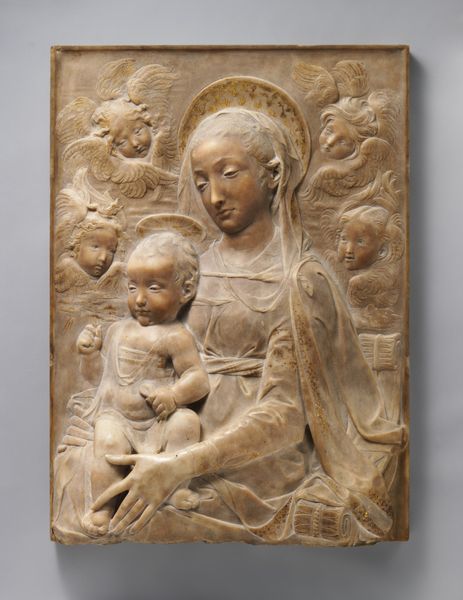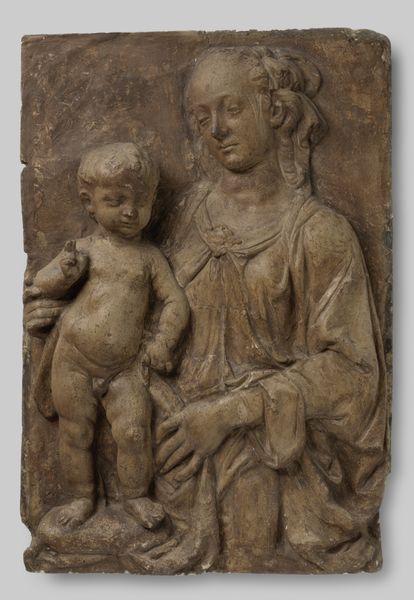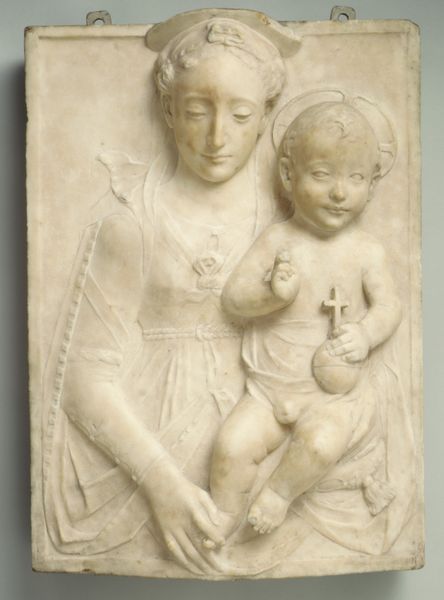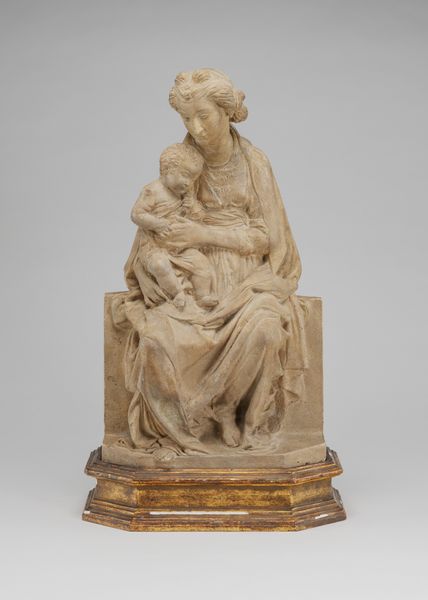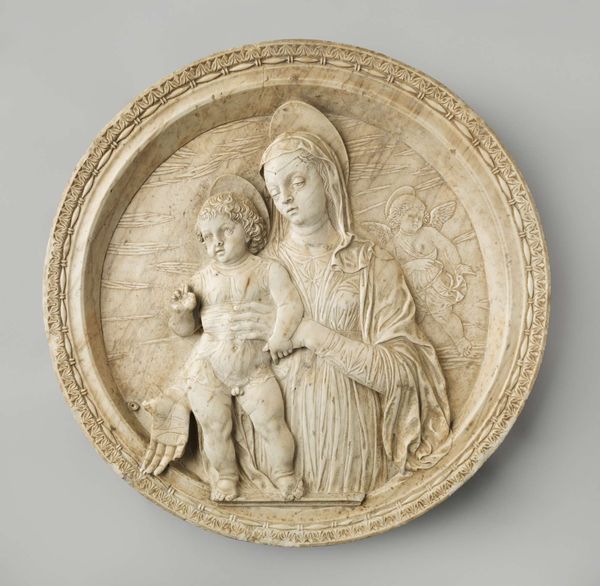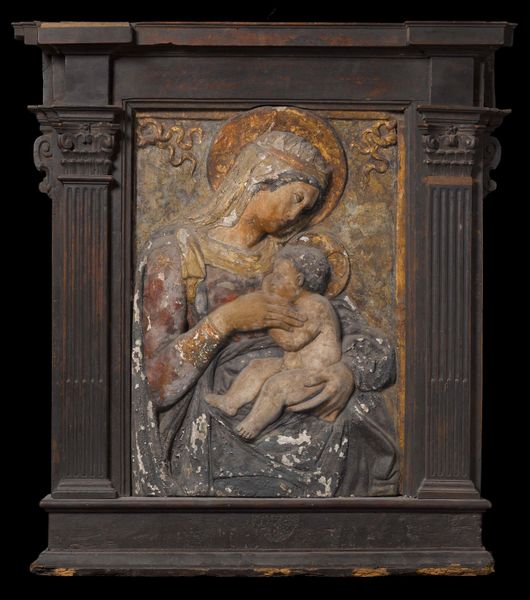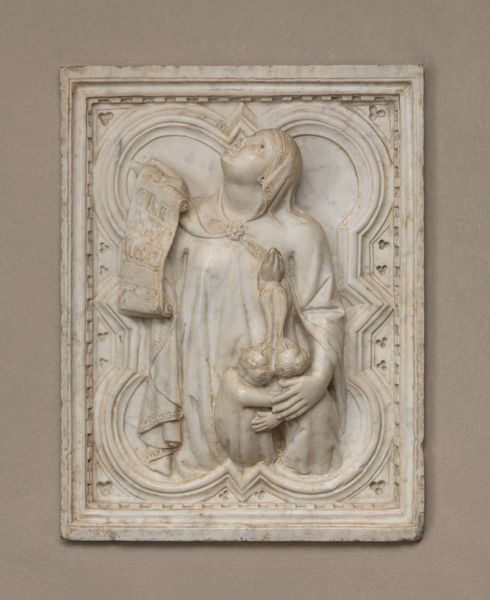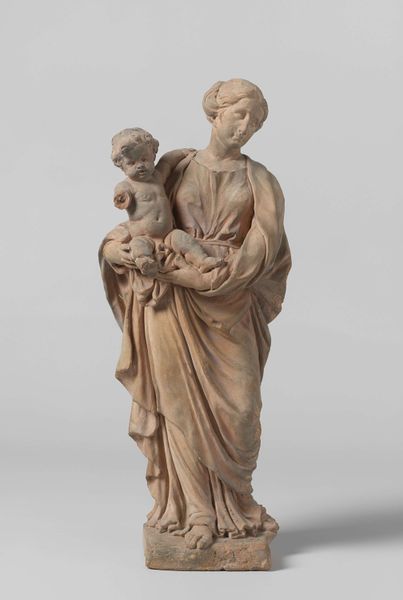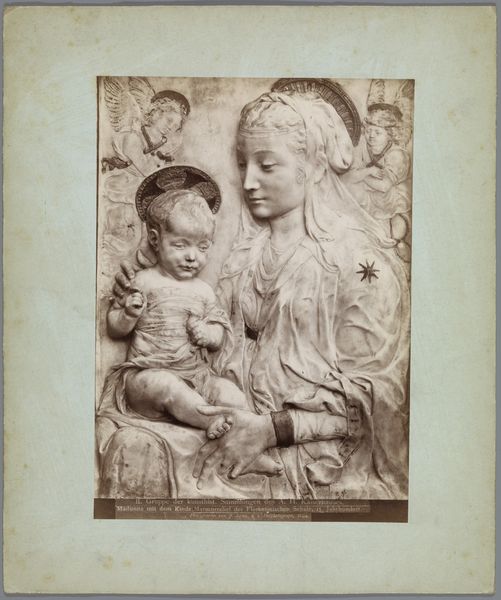
relief, sculpture, marble
#
sculpture
#
relief
#
figuration
#
madonna
#
sculpture
#
marble
#
italian-renaissance
Dimensions: overall: 84 x 56 cm (33 1/16 x 22 1/16 in.) framed: 115.6 x 86.4 x 12.7 cm (45 1/2 x 34 x 5 in.)
Copyright: National Gallery of Art: CC0 1.0
Curator: This elegant marble relief is "Madonna and Child" by Antonio Rossellino, created around 1475 to 1478. Editor: It exudes serenity, doesn't it? The delicate modeling of the figures gives them a remarkable sense of quiet intimacy. The overall effect is soft, yet incredibly solid. Curator: Indeed. The materiality is fundamental here. The selection and carving of the marble would have been a highly skilled, multi-stage process involving quarrying, transportation, and then the detailed work using chisels and other specialized tools in Rossellino’s workshop. It would be fascinating to learn more about the workshop practices and division of labor. Editor: And placing this work within its socio-political context, it speaks volumes about idealized motherhood and the religious symbolism prevalent during the Italian Renaissance. Mary's slightly downcast eyes and the child's forward gaze subtly suggest their respective roles within the divine narrative. It encourages a look at how societal expectations of women were often projected through religious art. Curator: Precisely. The creation of this relief also played into the economic systems of the time; artworks such as this one served as markers of wealth and status. Patrons actively participated in constructing not only religious narratives, but also secular narratives of power and prestige through their consumption and collecting habits. We should also remember that these marble reliefs provided vital occupation in Florence and beyond for the workers in quarries, those involved in transportation and workshops specializing in sculpture. Editor: Yes, let’s think too about the implied narrative: a powerful commentary on familial bonds, devotion, and the spiritual significance attached to motherhood – themes which are perpetually resonant but expressed here within very specific cultural constraints. I wonder how contemporary audiences might react to the demureness, versus, say, a more explicitly feminist representation of motherhood. Curator: By looking beyond the immediately visible, the layers of social and material dynamics really enrich our understanding of this "Madonna and Child". Editor: Absolutely, seeing art as embedded in its historical, social, and material fabric allows us to engage in a more meaningful and critical dialogue with the past.
Comments
No comments
Be the first to comment and join the conversation on the ultimate creative platform.

